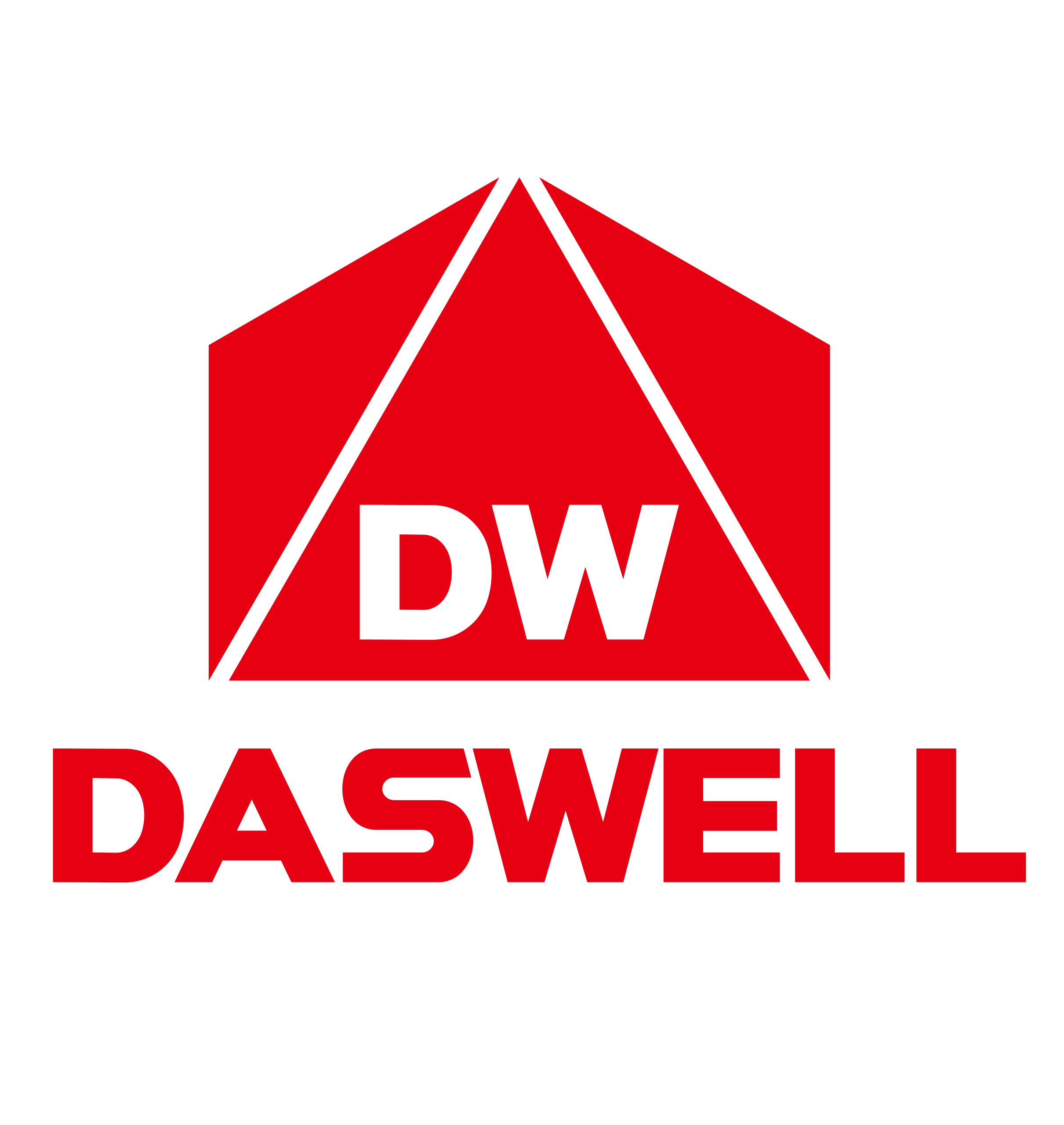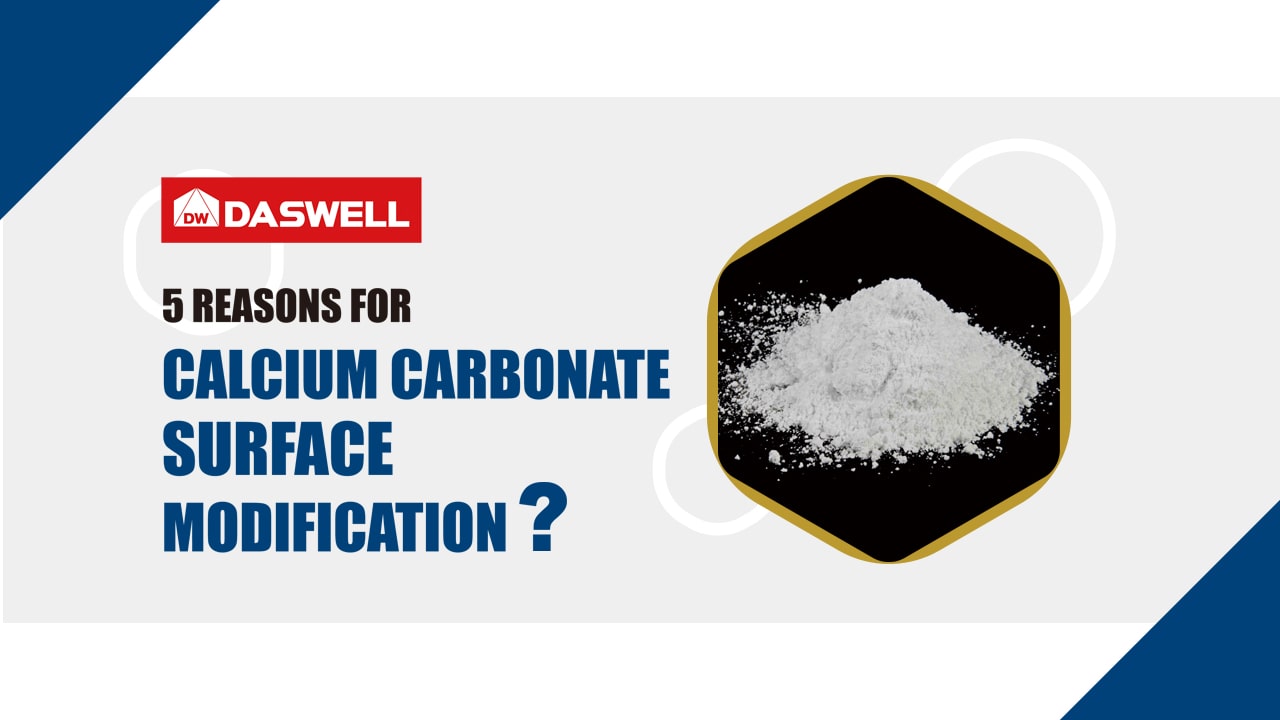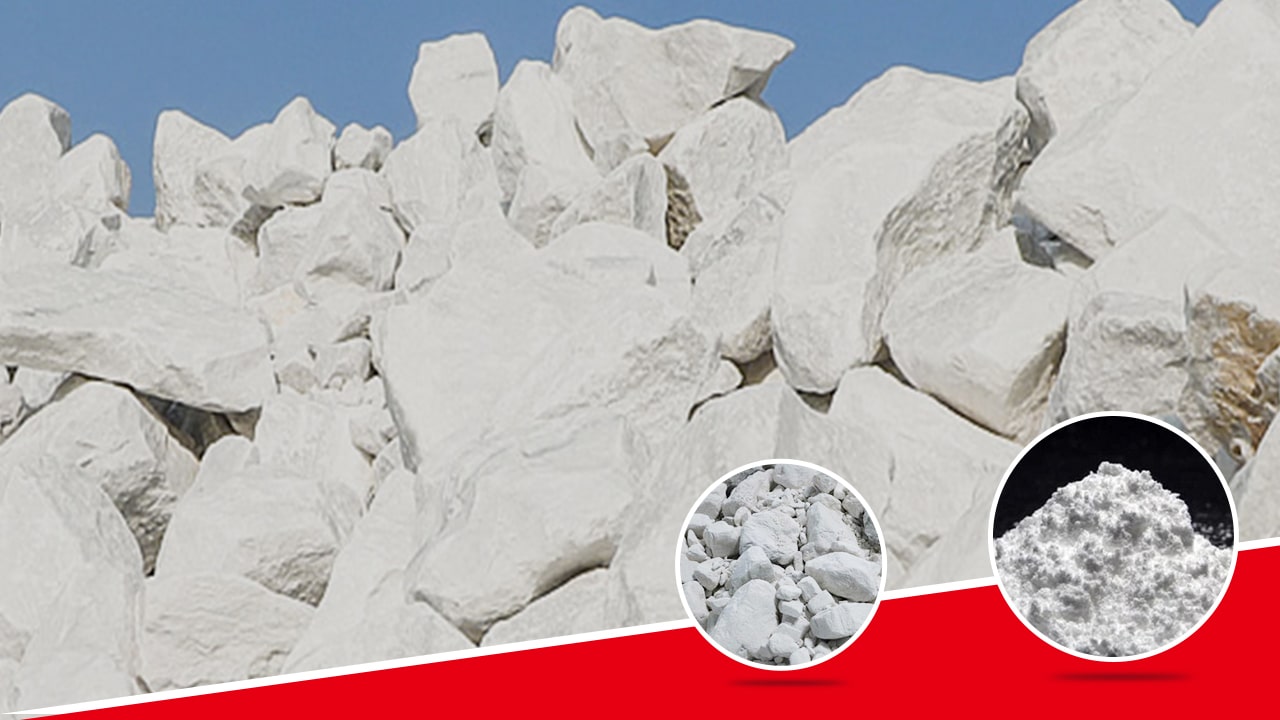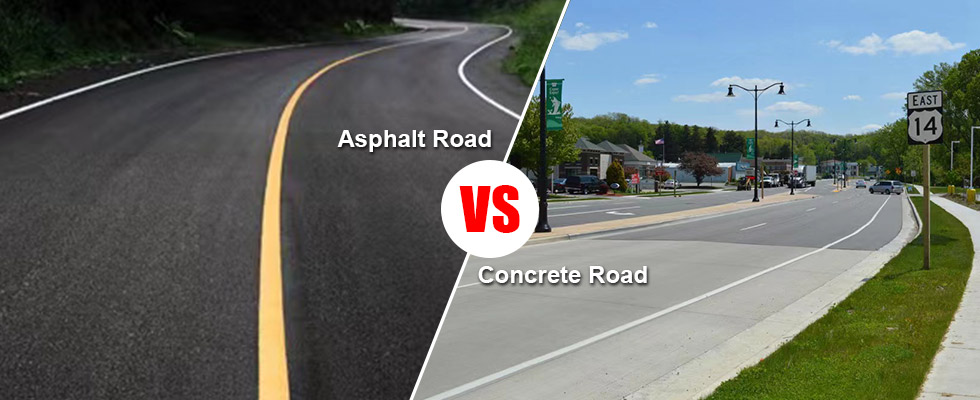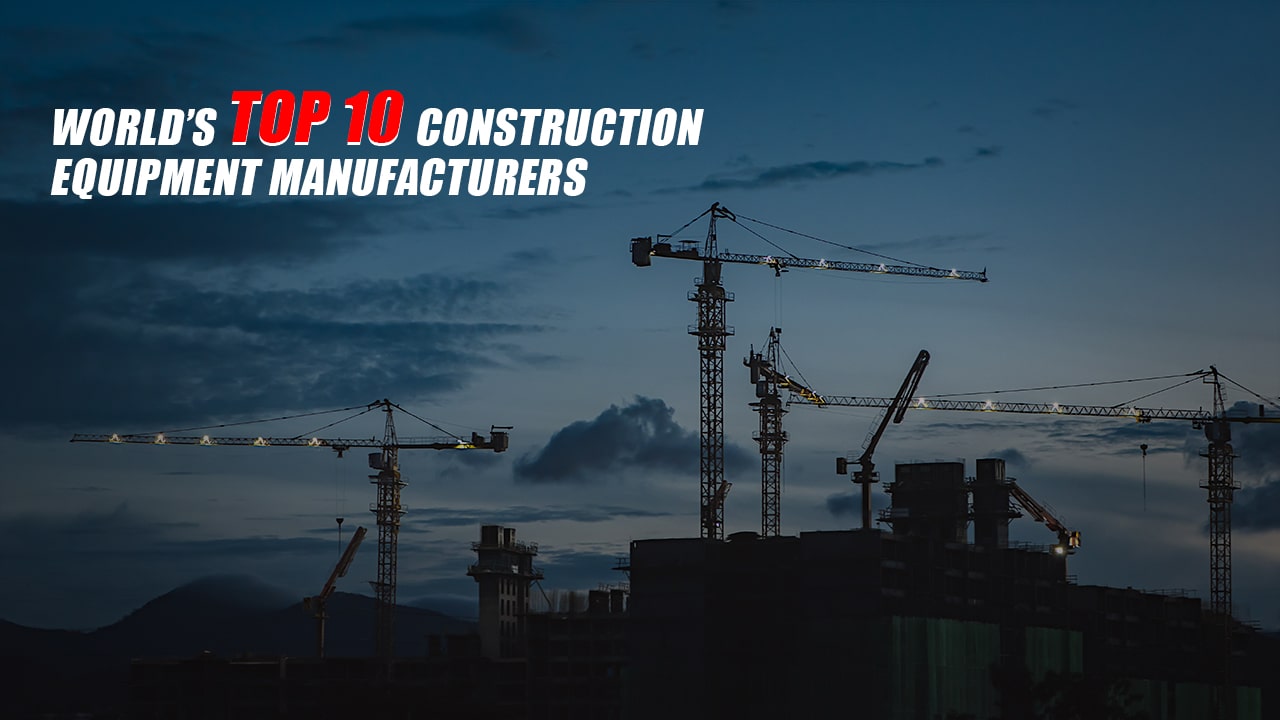How to Install Concrete Pump Pipelines?
When the concrete is delivered to the construction site, the prep work for pouring concrete needs to be done, such as the placement of the concrete pump and the placement of the pump pipe. The preparation of these tasks will directly affect the pumping efficiency of the concrete pump, so it must be paid attention to.
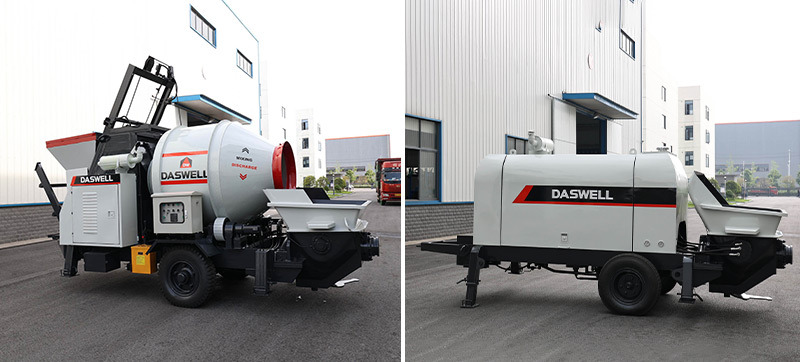
Layout of concrete pipeline
Layout of outlet pipes
There are three main ways of piping arrangement at the pump outlet. The way must be confirmed according to the spot state.
Direct connetion: After the outlet connects with cone pipe, the pipes are set forward straight.
U-type connection: After the outlet connects with cone pipe, one 3m straight pipe is connected and two 90˚ bend pipe are connected to form a 180˚ horizontal bend pipe.
L-type connection: After the outlet connects with cone pipe, one 3mpipe is connected and one 90˚ bend pipe is connected.
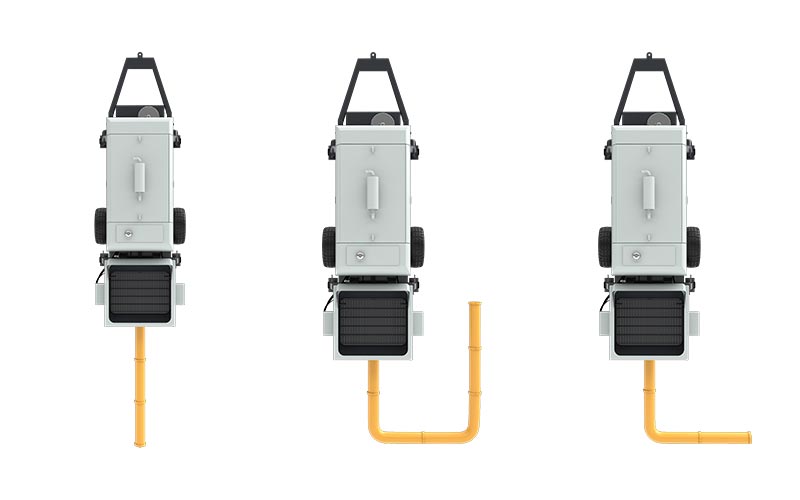
Different connections have their own advantages and disadvantages.
Direct connection: Small pumping resistance, but when pumping to a larger height, concrete is easy to backflow, suitable for horizontal or below horizontal concrete conveying.
U-type connection: Large pumping resistance, but when the pumping height is large, the concrete is not easy to backflow, suitable for large height pumping.
L-type connection: The pumping resistance is between the above two, but the lateral reaction force is larger, so there should be a firm fixing at the cone pipe.
Basic principle of piping layout
Concrete piping should never be subjected to any external tension.
Piping layout should be laid in accordance with the principle of the shortest distance and the least number of elbows.
The conveying pipeline should be arranged in an easily accessible place for personnel to clean and replace the conveying pipeline.
Connection of each pipeline is firm and steady. Bend pipe should be added firm fixed point in order to prevent pipe shaking and loosing during pumping.
Each pipe clamp shouldn’t contact with ground or supporting objects. There is gap expediently dismantling and installing. Each pipe clamp is screwed up to ensure that the joints don’t let out slurry and air.
The horizontal pipe shouldn’t be hung in the air and should be fixed firm. When the working time is very long, the pipe must be supported by a wood pad.
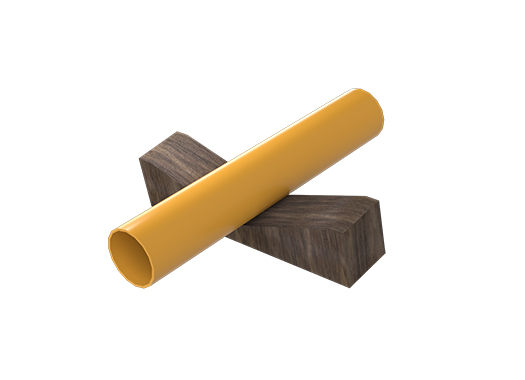
At the outlet of cone pipe, bend pipe is not connected direct. At least 5m pipe is connected and then bend pipe is connected.
The pipe far from the machine 3m to 5m should be fixed by 1 to 2 m³ concrete block. The concrete block can absorb flowing counterforce to make the machine steady and the pipe vibration decreased.
Delivery pipes laying should meet the following requirement: placing concrete at the far place firstly so as to avoid pipe connection during operation.
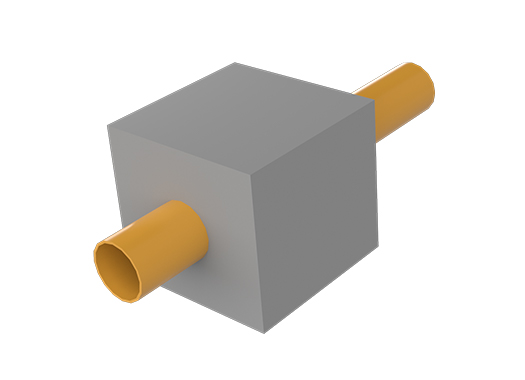
In summer, pipeline exposed to the sunlight will cause blockage, because overheated concrete will result in losing water. So pipeline must be covered with wet grass bags or similar. In winter, when temperature is up to -5℃, pipeline should be covered with grass bags to preserve warm and ensure concrete placing temperature.
Fix the conveying pipe which is connected with the cone pipe at the outlet of machine, in oreder to conveniently dismantle pipes for cleaning after stopping operation.
Conveying pipe close to the machine and in dangerous area person has to set foot must be screened with preserve to avoid pipeline cracking and clamp loosenes damage.
Vertical upward pipeline layout
The pipeline upward can be laid along elevator well, scaffold or through prefab hole of floor in order to dismantle pipeline conveniently.
Use new conveying line when laying upward pipeline; when height is big, the thickness pipes must be used at the bottem. The thickness pipes must be used on the underside and easy to dismantle. Bend pipe can’t be used for vertical pipeline supporting, each pipe should be supported by 1~2 bolsters. Straight and bend pipe must be fixed on wall. Scaffold, tower or lift well in order to transfer the concrete gravity of pipeline from bolsters into the building.
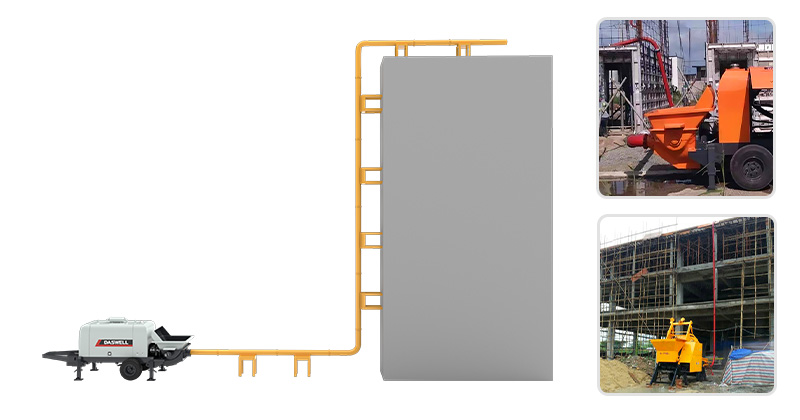
As the vertical lines height rises, the delivery concrete may incline to flow backwards and give an impact to S valve. In order to reduce the shock, a certain length of horizontal pipeline should be laid between the machine and vertical pipeline to resist the concrete flowing backwards. The length of horizontal pipeline is not less than the 15% length of the vertical pipeline, and the cut-off valve should be installed at the horizontal pipeline of machine outlet, if the concrete delivery is at high level.
If the pumping distance is very high and the concrete output is large, you can carry out two group parallel pipelines. If one group line is blocked, another pipeline can continuously working.
Vertical downward piping layout
If delivery concrete downwards, when the drop in height exceeds 6m, the pipeline should be laid as the following figure to avoid concrete segregation; When mortar is pumped, the sponge ball should be put into pipeline in different height every 20 to 30m to ensure the pumping normally.
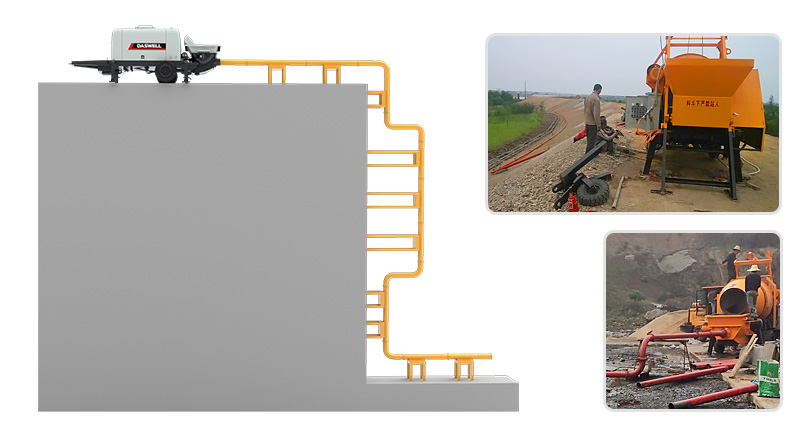
The length conversion of pipeline
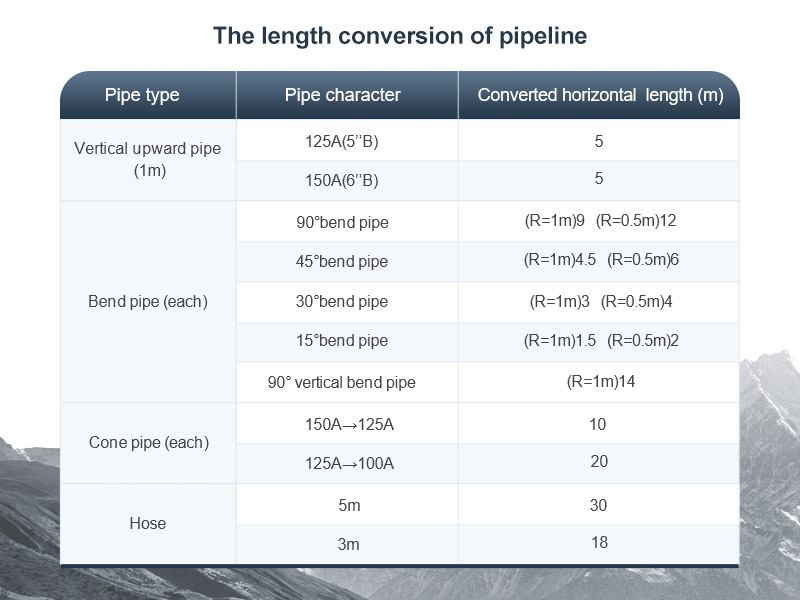
Notice:
The pipe conversion table is an empirical value measured by test under certain concrete conditions, not a theoretical value.
For example, the same concrete pump and the same diameter pipe (125A) are used to pump vertically upward and horizontally, respectively. When it is measured that the resistance of the vertical upward pipeline is equal to the resistance of the horizontal pipeline, it is considered that at this time, the height of the upward vertical pipe is equivalent to the length of the horizontal pipe, that is, every 1m of upward vertical pumping is equivalent to 5m of horizontal pumping. The same method can be used to elbows, cones and hoses.
The table is not a theoretical value, the pumped concrete conditions are different, the value is not the same. Therefore, this table is only used as a reference for piping.
Layout of concrete pump
In addition to the arrangement of the pump pipe, the arrangement of the concrete pump is also very important and you need to pay attention to the following aspects.
Once the concrete pump is delivered to the site, it should be set up away from slopes, embankments, trenches, etc. It should also consider easy access when the transport truck is loaded and shorten the pump line as much as possible.
The concrete pump must be placed on a solid and flat surface, preferably by pouring a flat concrete foundation and building a simple shed for it.
After the pump reaches the designated position, adjust its height with a jack, so that the pump walking wheel is off the ground, and fix the legs with outrigger pins. Ensure that the hopper door opens and closes freely and it is convenient to clear the material; if you do not move the pump for a long time, you can remove the tires.
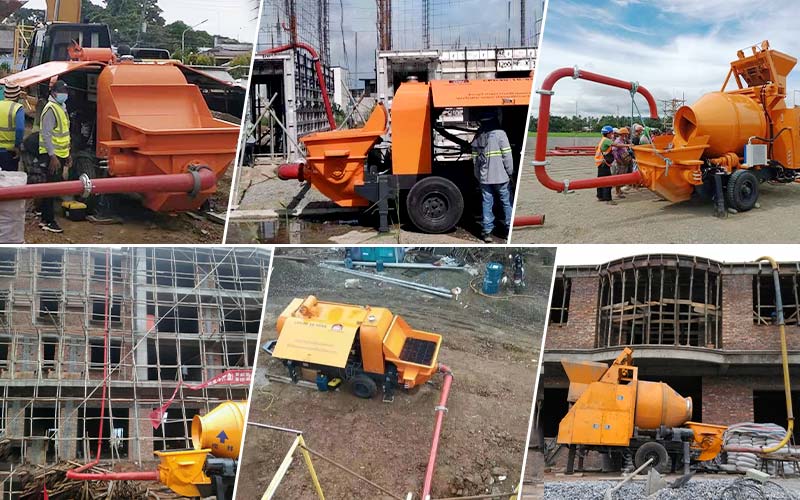
Around the concrete pump work site, it should ensure that the water source is adequate, and drainage facilities are smooth, and set up the appropriate lighting devices.
There must be a working space of 1 meter around the pump for the staff to operate and maintain.
When pumping from a low pressure state to a high pressure state, the pump must be re-fixed so that it can work stably and reliably.
Of course, in addition to the correct arrangement of concrete pump and pump pipe, the correct operation of the operator is also one of the factors to ensure the efficiency of concrete pump. If you have any questions, you can communicate with us at any time, and we hope we can share more relevant knowledge to you!
